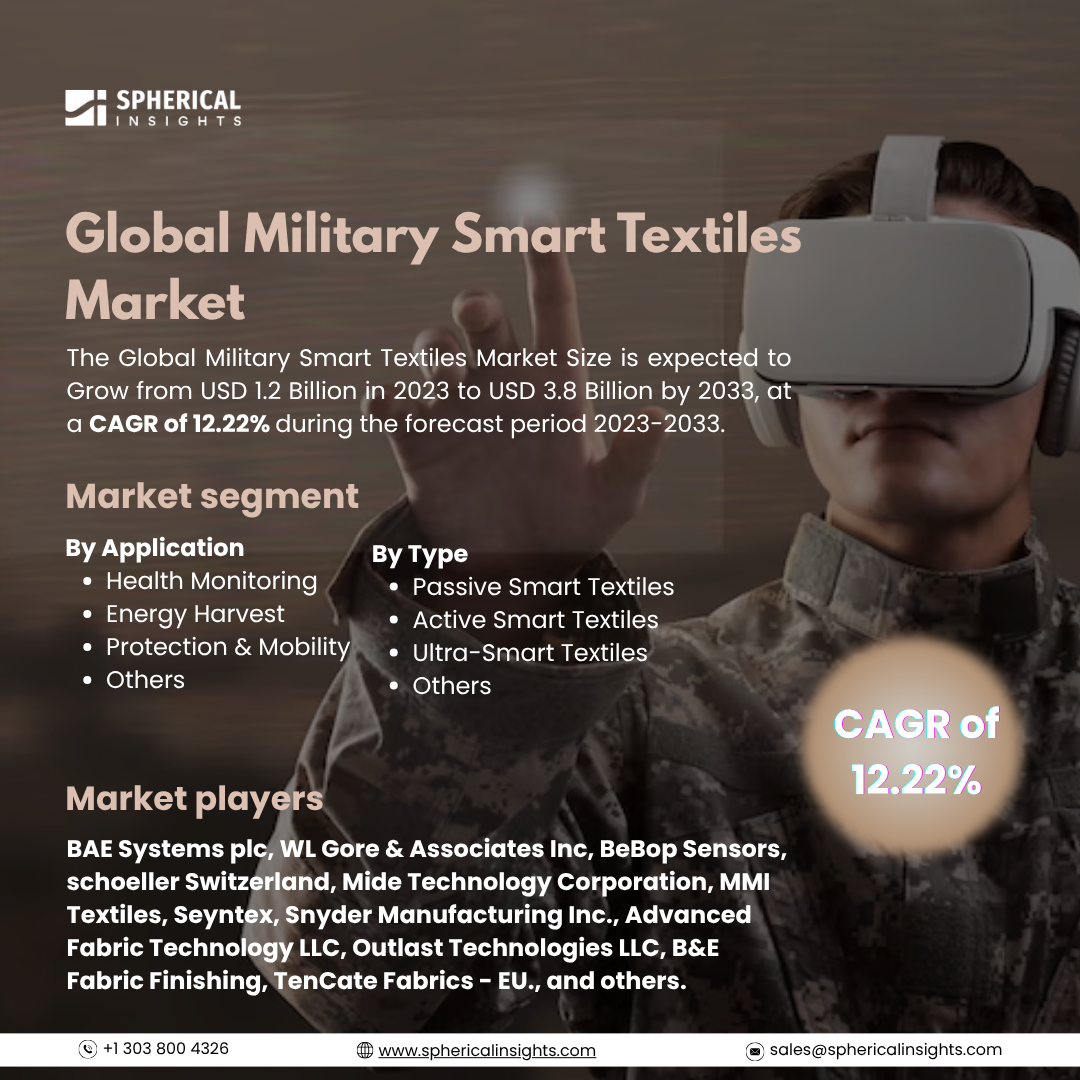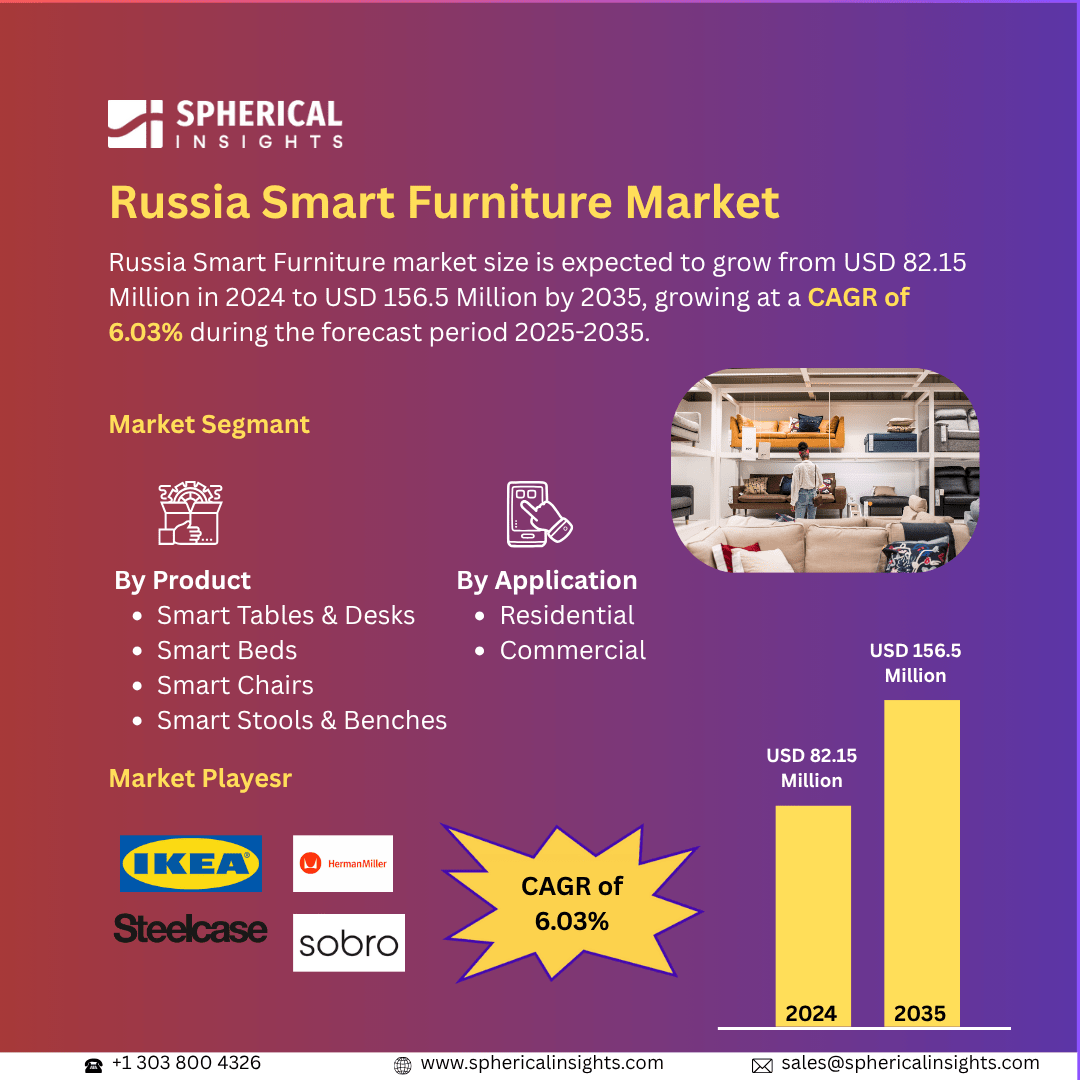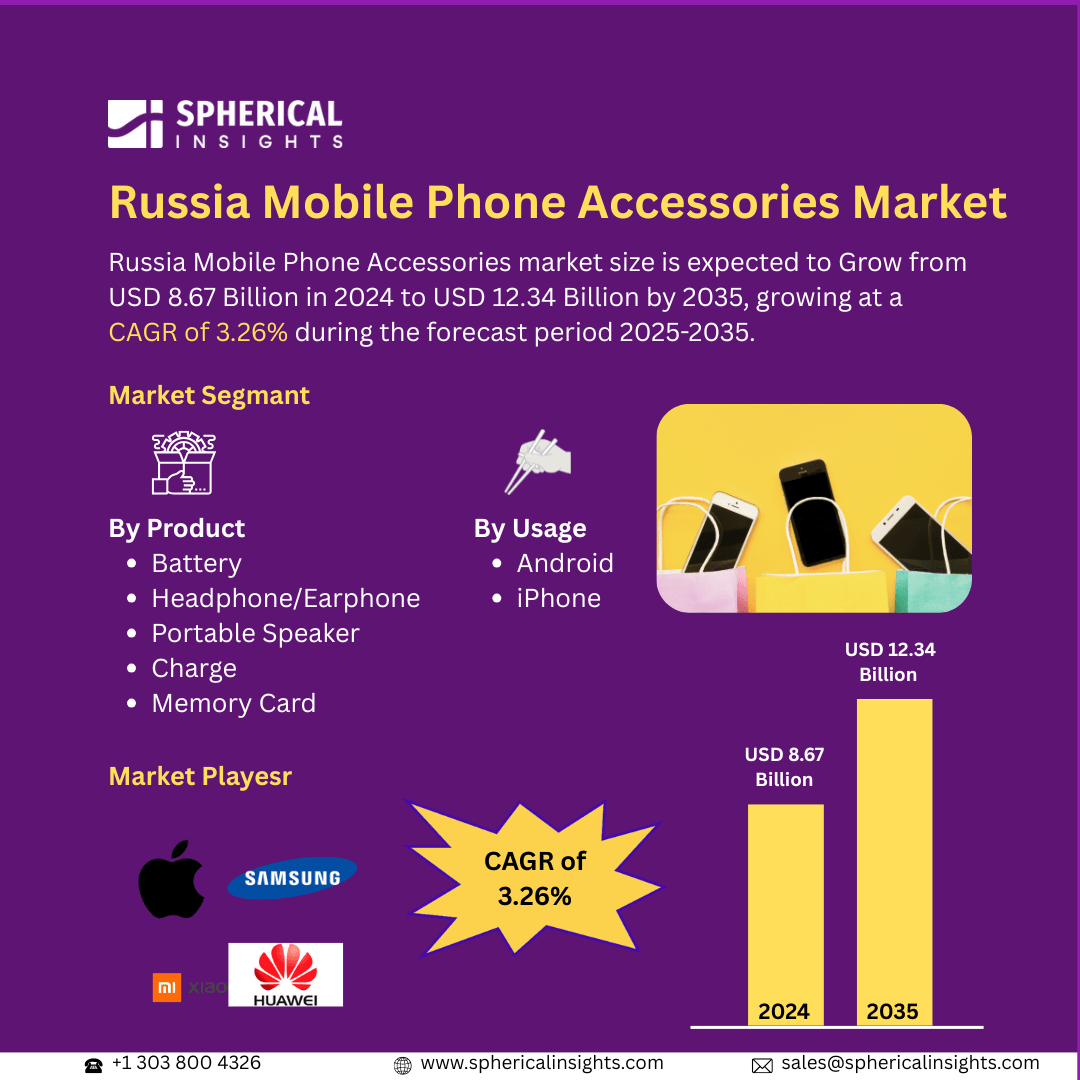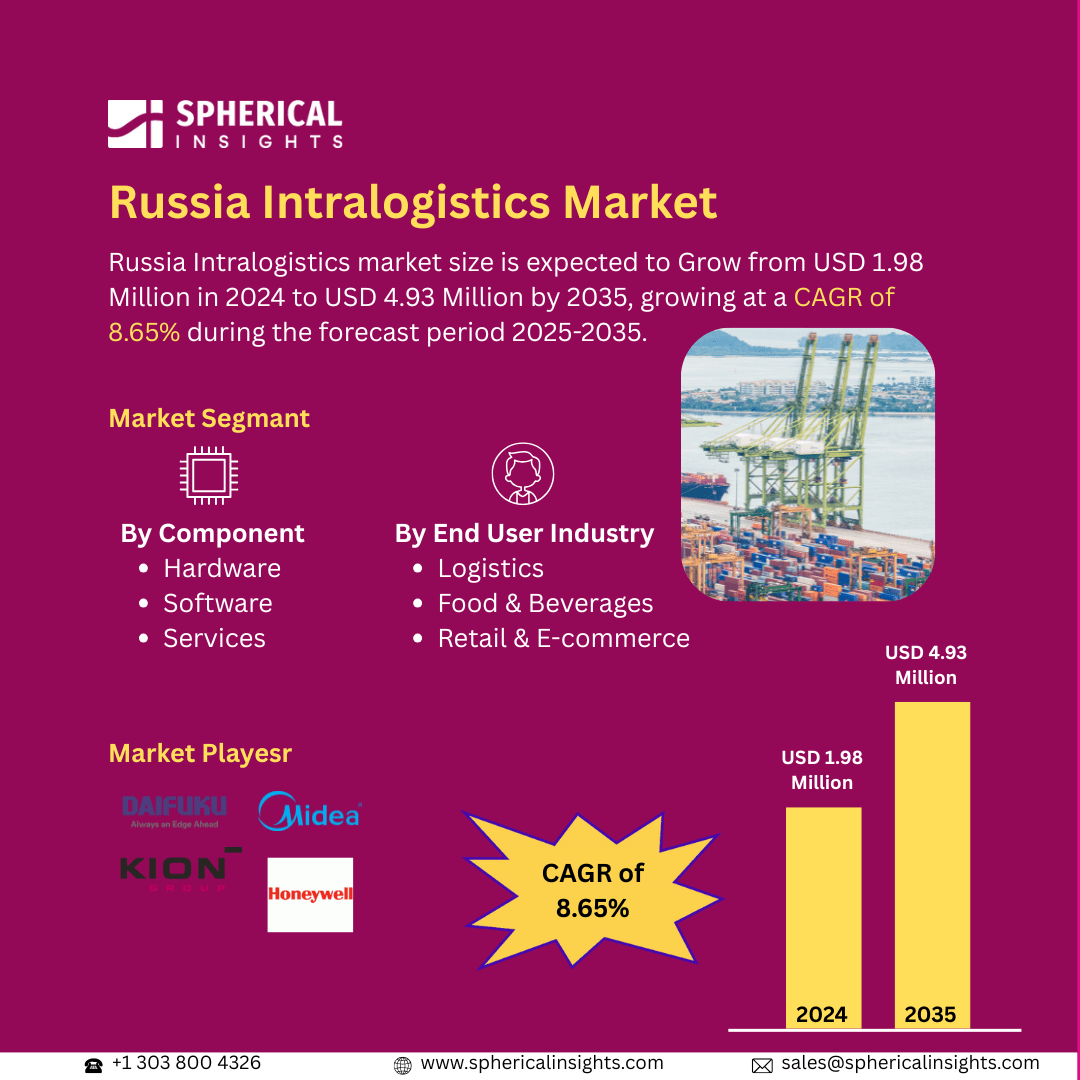Global Military Smart Textiles Market Size To Exceed USD 3.8 Billion by 2033
According to a research report published by Spherical Insights & Consulting, The Global Military Smart Textiles Market Size is expected to Grow from USD 1.2 Billion in 2023 to USD 3.8 Billion by 2033, at a CAGR of 12.22% during the forecast period 2023-2033.
Browse 210 market data Tables and 45 Figures spread through 190 Pages and in-depth TOC on The Global Military Smart Textiles Market Size, Share, and COVID-19 Impact Analysis, By Type (Passive Smart Textiles, Active Smart Textiles, Ultra-Smart Textiles, and Others), By Application (Health Monitoring, Energy Harvest, Protection & Mobility, and Others), and By Region (North America, Europe, Asia Pacific, Latin America, Middle East, and Africa), Analysis and Forecast 2023 – 2033.
The military smart textiles market encompasses the development, production, and deployment of advanced fabrics integrated with electronic components and technologies designed to enhance the functionality of military apparel and gear. These textiles aim to improve soldier performance, safety, and operational efficiency by providing capabilities such as real-time health monitoring, adaptive camouflage, energy harvesting, and environmental sensing. Moreover, the military smart textiles market is driven by increasing defense budgets, demand for enhanced soldier safety and performance, and rapid advancements in wearable technology. These textiles offer real-time monitoring, improved mobility, and environmental adaptability. Growing geopolitical tensions and the push for technologically advanced warfare systems further fuel market growth and innovation. However, high production costs, technical integration challenges, and limited standardisation across defense sectors restrain widespread adoption of military smart textiles.
The passive smart textiles magnets segment accounted for the largest share of the global Military Smart Textiles market in 2023 and is anticipated to grow at a significant CAGR during the forecast period.
Based on type, the global military smart textiles market is divided into passive smart textiles, active smart textiles, ultra-smart textiles, and others. Among these, the passive smart textiles segment accounted for the largest share of the worldwide military smart textiles market in 2023 and is anticipated to grow at a significant CAGR during the forecast period. This is due to their simplicity, cost-effectiveness, and widespread use. These textiles respond to external stimuli without embedded electronics, offering basic functionality such as temperature regulation and moisture control, making them ideal for large-scale deployment in standard military uniforms and gear.
The protection & mobility segment accounted for a substantial share of the global military smart textiles market in 2023 and is anticipated to grow at a rapid pace during the projected period.
On the basis of the application, the global military smart textiles market is divided into health monitoring, energy harvest, protection & mobility, and others. Among these, the protection & mobility segment accounted for a substantial share of the global military smart textiles market in 2023 and is anticipated to grow rapidly during the projected period, as these features are critical for enhancing soldier safety, endurance, and combat effectiveness. Smart textiles designed for improved durability, environmental adaptability, and ease of movement are increasingly integrated into uniforms and gear to support modern military operations in diverse conditions.
North America is projected to hold the largest share of the global military smart textiles market over the projected period.
North America is projected to hold the largest share of the global military smart textiles market over the projected period. This is driven by substantial defense budgets, early adoption of advanced technologies, and strong R&D investments. The presence of major defense contractors and government support for soldier modernization programs further boosts the region’s leadership in developing and deploying smart textile solutions.
Europe is expected to grow at the fastest CAGR of the global military smart textiles market during the projected period. This is supported by strong defense initiatives, collaborative research projects, and modernization of armed forces. Countries like Germany, France, and the UK are investing in advanced wearable technologies to enhance soldier performance and operational efficiency.
Company Profiling
Major vendors in the global military smart textiles market are BAE Systems plc, WL Gore & Associates Inc, BeBop Sensors, schoeller Switzerland, Mide Technology Corporation, MMI Textiles, Seyntex, Snyder Manufacturing Inc., Advanced Fabric Technology LLC, Outlast Technologies LLC, B&E Fabric Finishing, TenCate Fabrics - EU., and others.
Key Target Audience
- Market Players
- Investors
- End-users
- Government Authorities
- Consulting and Research Firm
- Venture capitalists
- Value-Added Resellers (VARs)
Recent Development
- In February 2025, Military fabric printer, dyer, and finisher Pincroft has strengthened its position as a leading manufacturer of camouflage textiles with a significant £1.5 million investment in state of the art rotary printing technology. The expansion was celebrated on February 10, 2025, with a high-profile visit from UK government officials, marking a major step forward for the company and British manufacturing.
Market Segment
This study forecasts revenue at the global, regional, and country levels from 2023 to 2033. Spherical Insights has segmented the global military smart textiles market based on the below-mentioned segments:
Global Military Smart Textiles Market, By Type
- Passive Smart Textiles
- Active Smart Textiles
- Ultra-Smart Textiles
- Others
Global Military Smart Textiles Market, By Application
- Health Monitoring
- Energy Harvest
- Protection & Mobility
- Others
Global Military Smart Textiles Market, By Regional
- North America
- Europe
- Germany
- UK
- France
- Italy
- Spain
- Russia
- Rest of Europe
- Asia Pacific
- China
- Japan
- India
- South Korea
- Australia
- Rest of Asia Pacific
- South America
- Brazil
- Argentina
- Rest of South America
- Middle East & Africa
- UAE
- Saudi Arabia
- Qatar
- South Africa
- Rest of the Middle East & Africa



